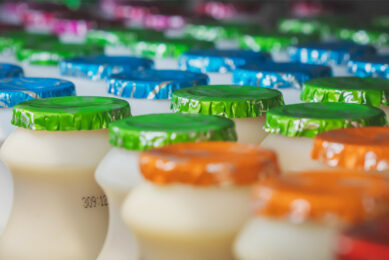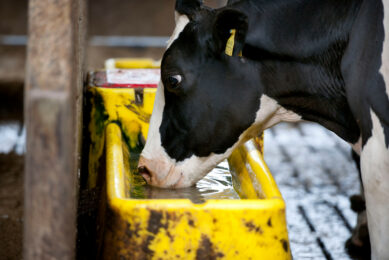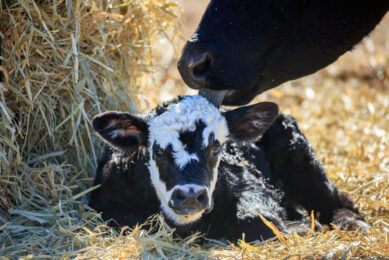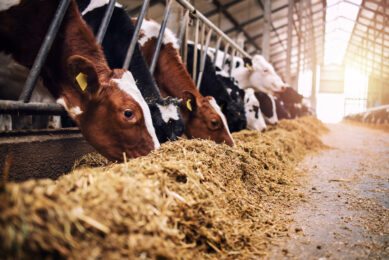Cost-effective cooling for outdoor cows
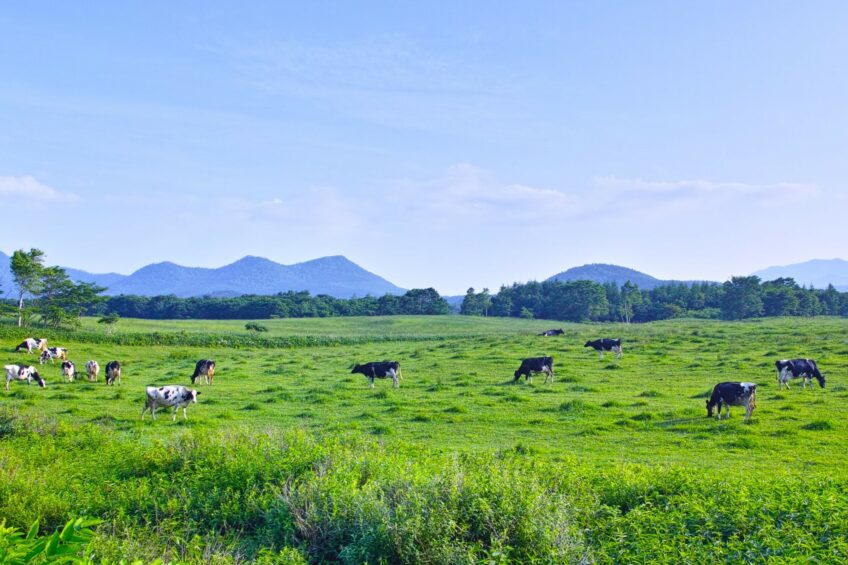
A published study demonstrated the effectiveness, both in terms of cost and heat stress reduction, of extending cooling strategies for dairy cows throughout the day and night using a novel outdoor use of ducted air systems that could be applied to outdoor herds where there is limited physical infrastructure.
Heat stress is a major limiting factor in dairy production in tropical, sub-tropical, and temperate climates during summer, creating a significant risk to the sustainability of global dairy production. The common effects of heat stress in dairy cows are lower feed intake and reduced milk yield and milk quality. The possible but less obvious effects are decreased reproductive performance and increased prevalence of animal health problems, as heat stress negatively influences animal welfare.
Evaporative cooling is the main means by which dairy cows can reduce heat load. Evaporative cooling is affected by wind speed, dry bulb temperature, relative humidity and the physical properties of the cow’s hair coat. Cooling infrastructure, whether using shade, fans, sprinklers, or a combination of all of these, comes at a cost, so cooling strategies must be cost-effective.
On the other hand, most of the published work regarding cooling strategies for dairy cows has focused on cows housed in barns or feedlots. The current study is focused on cows housed on a feedpad or stand-off areas that are often used to get cows off wet paddocks as part of a strategy to reduce pasture and soil damage, increase pasture regrowth and as a place for the supplementary feeding of a dairy herd. Reports show that in most dairies, heat load is usually managed during the hottest parts of the day using shade, fans, sprinklers, or various combinations of these; however, there is an increasing trend to have fans and other cooling strategies running 24 hours per day.
In the current study, researchers from The University of Queensland set out to fill this gap as they investigated the impacts of adding nighttime cooling in addition to daytime cooling on the milk yield, rumen temperature and welfare of an outdoor herd exposed to high summer temperatures.
Day-only versus day-plus-night cooling
In this study, researchers used Holstein-Friesian dairy cows to determine the effects of adding nighttime cooling in addition to daytime cooling on milk yield, rumen temperature, and well-being of early lactation cows exposed to a naturally high heat load. The cows were equally assigned to one of the two groups as follows:
- Day-only cooling group: Day cooling included overhead sprinklers (large droplets) and fans while in the dairy holding yard, plus ducted air blowing onto cows during milking, plus shade and fans at the feedpad, and a shaded loafing area.
- Day-plus-night cooling group: Enhanced day and night cooling included overhead sprinklers (large droplets) and fans in the dairy holding yard, plus ducted air blowing onto cows during milking, plus thorough wetting (shower array) on exit from dairy, plus shade and overhead fans at feedpad, and shaded loafing area plus ducted fan-forced air blowing onto cows at night. In this group, the fans at the feedpad were turned off at night.
Higher milk production with day-plus-night cooling
Lower milk yields are a common occurrence when dairy cows are subjected to high heat loads. Over the 6 days following the heatwave, milk production was greater in the day-plus-night cooling cows (3.61 kg/cow per day) compared to the day-only cooling cows; this higher production was observed for the rest of the study period. Overall, the milk yield was 2.05 kg/cow per day greater in the day-plus-night cows than in the day cooling cows.
“Enhanced cooling during the heatwave allowed the day-plus-night cows to recover faster than the day-cooling cows,” said the researchers. They added: “Although the major aim during a heatwave is to reduce negative effects on health, well-being, and performance, recovery after a heat event is important; that is, animals need to return, as close as possible, to performance before the heatwave, without any negative effects on health and well-being.”
Dry matter intakes were similar between treatments during the heatwave, however, over the 6 days following the heatwave, intake was 9.4% higher for the day-plus-night cows.
Rumen temperature and panting scores
The day-plus-night cooling cows had lower (39.51°C vs 39.66°C) rumen temperatures than day-only-cooling cows on each day of the eight-day heatwave. The panting score of animals can be used to determine the severity of heat stress or animal welfare; the panting score for the day-plus-night cooling cows was lower than that of the day-only cooling cows at 0.68 and 0.75 units, respectively.
It was concluded that the lower panting score for the day-plus-night cows suggests that their recovery from the heatwave was quicker than for the day-only cows, but whether this was due to the cooling effect during the heatwave or the enhanced cooling after the heatwave was difficult to determine since the researchers did not measure the night-time panting score.
“Collecting 24-hour respiratory data is an essential requirement for future studies. The use of panting scores without respiration rate data should be reconsidered because it does not permit fine-scale data analysis,” they said.
Cost-effectiveness
Following calculations based on 200 cows, the researchers concluded: “The combination of the shower array and the ducted air systems had a beneficial effect on milk production and cow welfare and is a cost-effective strategy for producers to consider with outdoor herds managed on a feedpad.”
The cost of the ducted system used in the study was approximately AU$31,500 but produced AU$21,308 of additional milk income, meaning that 67.7% of the installation cost was recovered over the first summer.
“Over time, this kind of enhanced day-plus-night cooling system could provide powerful benefits for outdoor herds, from increased production and profits to boosted cow welfare,” they said.
*Based on an original article by B. Gaughan, K. Sharman, and M. R. McGowan, 2023. The effect of day-only versus day-plus-night cooling of dairy cows. Journal of Dairy Science, 106:5002–5017.
Join 13,000+ subscribers
Subscribe to our newsletter to stay updated about all the need-to-know content in the dairy sector, two times a week.



